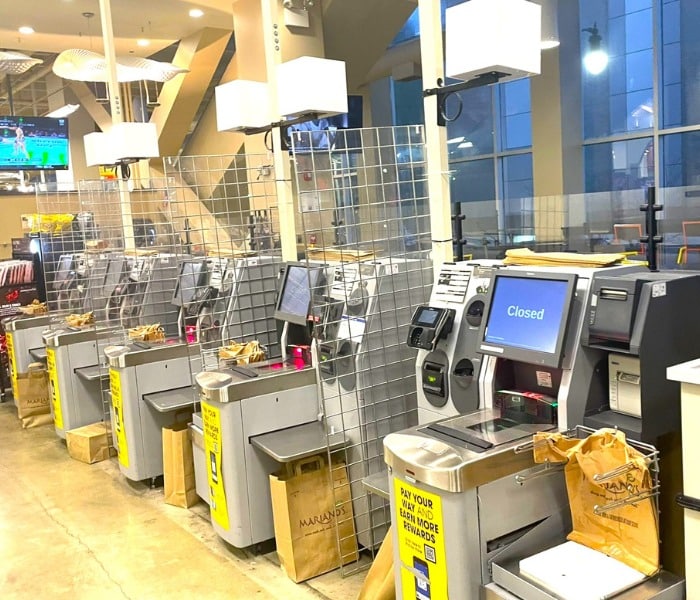Self-checkouts were once seen as the solution to long queues at supermarkets and other stores. They promised to speed up the checkout process, reduce waiting times, and improve customer satisfaction. However, despite their initial popularity, self-checkouts have failed to become what they were promised to be.
First, let’s take a look at a quick history of this technology: the self-checkouts machines were first introduced in the 1990s, and their popularity quickly grew. They promised to speed up the checkout process, reduce waiting times, and improve customer satisfaction. With self-checkouts, customers could scan and bag their items themselves, without the need for a cashier. This would free up staff to focus on other tasks, and reduce labor costs for retailers. Despite their initial popularity, self-checkouts have faced a number of problems. Here are some of the main reasons why self-checkouts have failed to live up to their promise:
The Problems with Self-Checkouts That Costumers Actually Hate
One of the biggest issues with self-checkouts is technical difficulties. Yes, folks: machines fail, they go wrong, and they can commit mistakes. these computerized stations can be slow and unreliable, and often require staff intervention to fix errors with scanning or payment. This can lead to frustration and longer waiting times, which defeats the purpose of self-checkouts. Self-checkouts have also been plagued by theft and fraud. Some customers have figured out ways to trick the system, such as by scanning cheaper items or pretending to scan items that they haven’t actually purchased. This has led to losses for retailers, and has made self-checkouts less profitable than they were intended to be.

Costumers also hate the lack of personal interaction. Some customers find the process impersonal and prefer to interact with a cashier. They like the human contact, the jokes, and the smile that a machine can’t give them. This can lead to a negative shopping experience, which can impact customer satisfaction and loyalty. “This should be your freaking job, not mine,” said a costumer to James, a 25-year-old store employee interviewed by The Guardian. “I said, ‘Sir, no one’s forcing you to come to self-checkout. If you want a cashier, you can go to register three.’”
Self-checkouts can also be difficult for some customers to use, such as those with disabilities or the elderly. This can lead to frustration and longer waiting times, which defeats the purpose of self-checkouts.
Self-Checkout Are Bringing More Challenges Than Benefits
According to a report by Retail Marketing International, self-checkout theft is five times more likely than traditional cashier checkout theft. Retailers also experience a 50% higher rate of loss when using these systems.
In some areas, shoplifting has increased by 30% since the introduction of self-checkout systems in the United States. While surveys suggest that 90% of customers aged 18-34 prefer self-checkout systems over traditional checkouts, 56% of American shoppers feel that this encourages shoplifting.
Australia has reported annual losses of up to $3.2 billion due to self-checkout theft, while France has seen increases of up to 30%. In the United Kingdom, it has been reported that £3 billion worth of goods were stolen through these machines every year, and Canadian retailers have reported that 40% of shoplifters use them. Walmart has reported a 10-15% increase in theft since adopting self-checkout systems, leading to an average inventory shrinkage of 1.47% per store due to fraudsters taking advantage of 9% of transactions made via these systems. Additionally, 42% of customers have admitted that they don’t understand how the self-checkout systems work.